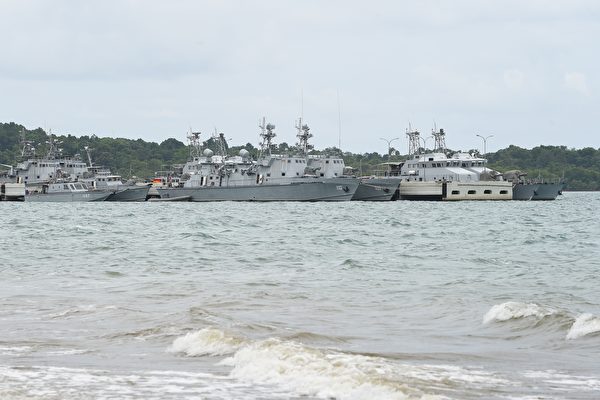In a report from July 2, 2024, it was stated that two Chinese navy escort ships have been docked at the Ream (云朗) naval base in Cambodia since December last year. The base is reported to be a permanent military outpost established by the Chinese military in the Gulf of Thailand.
According to a report by The Wall Street Journal on Monday, these two Chinese escort ships have remained docked in Ream port for over six months, indicating that the Chinese military has established a permanent presence there. This waterway is expected to play a crucial role in potential conflicts involving Taiwan or the South China Sea.
Washington has been closely monitoring this base in recent years. In 2019, it was reported that China and the Cambodian government signed a secret agreement allowing Beijing to establish a naval base in Ream.
The US Embassy in Cambodia stated that US Defense Secretary Lloyd Austin visited the capital Phnom Penh in early June and proposed to restore military relations with Cambodia. In 2022, US President Biden expressed concern over China’s use of the base during his visit to Cambodia while attending a regional summit.
Although China’s military footprint globally still pales in comparison to the US, the presence of Chinese warships in Ream port demonstrates China’s increasing military capabilities and ambitions.
There is a $2 billion highway funded by China between Ream and the Cambodian capital Phnom Penh, which opened to traffic in 2022. Currently, there are numerous construction sites with cranes scattered across Ream port.
Cambodia has provided varying explanations for the presence of Chinese warships, initially stating they were there for training purposes and later to prepare for joint military exercises in May between the two countries. However, satellite images from Maxar Technologies showed that the two escort ships remained docked there even after the exercises.
When asked about the warships and the expansion of the base, the Chinese government stated that they were built at the request of Cambodia. The Chinese Ministry of Foreign Affairs said, “China supports Cambodia in advancing the upgrading and renovation project of the Ream naval base, which will enhance Cambodia’s ability to uphold national independence and sovereignty.”
Two years ago, the then Cambodian Defense Minister Tea Banh, along with Chinese Ambassador to Cambodia Wang Wentian, toured the Gulf of Thailand and then held a ribbon-cutting ceremony for the major upgrade of the Ream base. With Chinese funding, the project included the construction of two new docks, warehouses, shipyards, and berthing facilities.
According to a report by the Center for Strategic and International Studies (CSIS), satellite imagery over the past two years has revealed new docks, dry docks, an administrative building, what appears to be living quarters, and a basketball court in Ream. Two buildings funded by the US were demolished. In 2021, the Pentagon expressed willingness to pay for the upgrade of one building, but it was demolished before the construction began.
In mid-May, more than 2,000 Cambodian and Chinese military personnel participated in a large-scale military exercise named “Golden Dragon”. The two-week exercise showcased China’s latest rifles, drones, as well as counter-terrorism and anti-piracy drills.
Cambodia has stated that China does not have exclusive rights to use Ream port, but since its upgrade, no other foreign warships have visited the port.
Thomas Shugart, a senior researcher at the Center for a New American Security, noted that the facilities at Ream port appeared very similar to China’s military base in Djibouti, located at a strategically important position in the Horn of Africa.
Craig Singleton, a senior China research fellow at the Foundation for Defense of Democracies, said, “This new base serves as a potential platform for military action in the event of a Taiwan contingency. China’s goal is to prevent secure US military passage through the Malacca Strait into regions surrounding China, essentially denying US participation in combat.”

